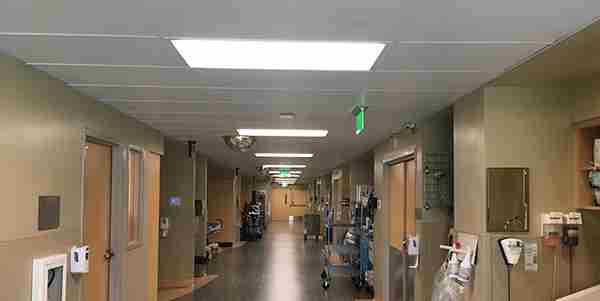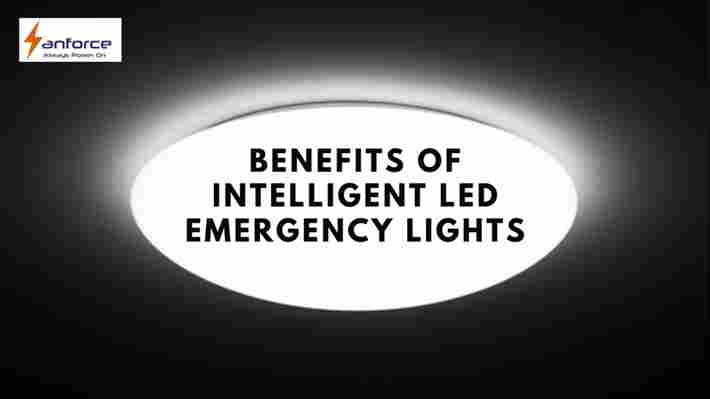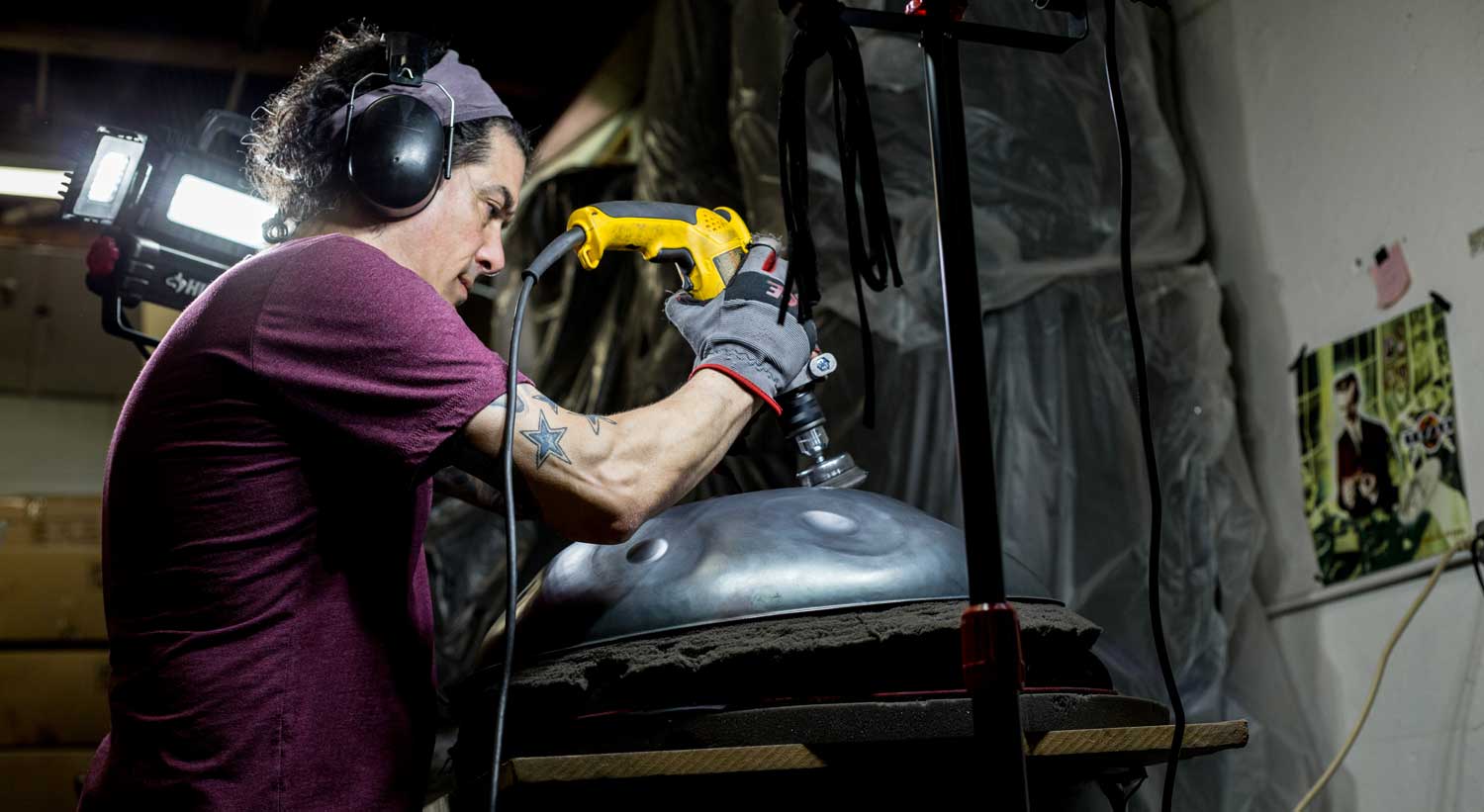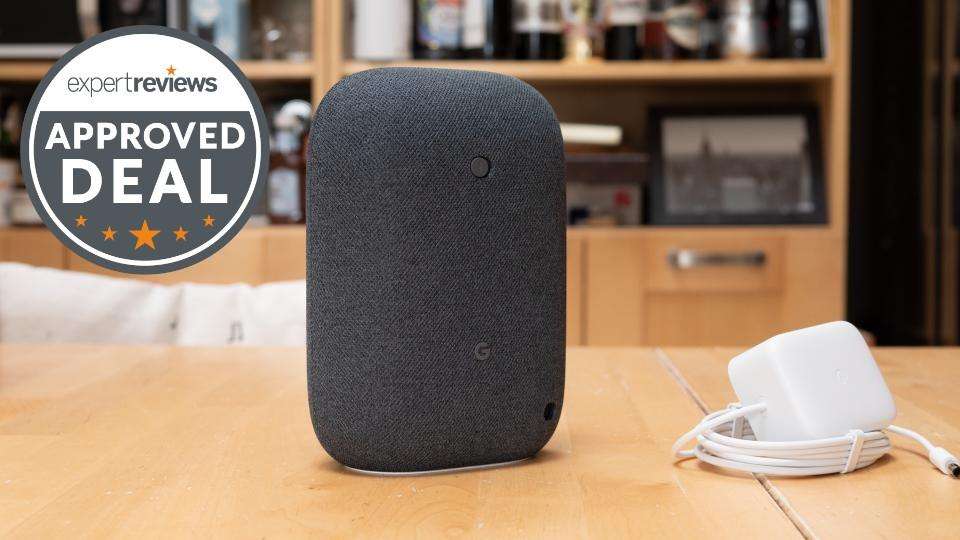Emergency Ready: A Contractor’s Guide to Commercial Emergency Lights
An actual emergency isn’t the time to learn your lights aren’t working as expected.

Unfortunately for many companies, the quality of their emergency lighting isn’t something they think about a whole lot. Fortunately for you, this provides an excellent opportunity to educate your customers on the latest emergency lighting technology – and how it can make a crucial difference when needed.
This article will help you become better-informed on emergency lighting and what options are available, so you can provide your customers with the information they need to make a smart decision. We’ll look at:
The regulations you need to know about and why.
What to look for when planning and choosing emergency light fixtures (standard “bug-eye” lights aren’t always the best option).
New options you may not have considered – but that can significantly improve safety in a facility.
Let’s dive in!
Who Makes and Enforces the Rules
There are several governing bodies responsible for setting codes and enforcing the requirements for emergency lighting in commercial facilities:
The U.S. Occupational Safety and Health Administration ( OSHA ) ensures the safe and healthful working conditions for workers by setting and enforcing standards, and by providing training, outreach, education and assistance. Employers must comply with all applicable OSHA
OSHA ensures the safe and healthful working conditions for workers by setting and enforcing standards, and by providing training, outreach, education and assistance. Employers must comply with all applicable OSHA The International Building Code ( IBC ), developed by the International Code Council (ICC), has been adopted for use by most U.S. jurisdictions. It preserves public health and safety by providing safeguards from hazards associated with the built environment.
( ), developed by the International Code Council (ICC), has been adopted for use by most U.S. jurisdictions. It preserves public health and safety by providing safeguards from hazards associated with the built environment. The National Fire Prevention Association’s (NFPA) Life Safety Code is the most widely used source for strategies to protect people based on building construction, protection, and occupancy features that minimize the effects of fire and related hazards.
Aside from these “big three,” local authorities in some jurisdictions may have additional codes or regulations that must be followed. Customers whose facilities aren’t in compliance face the risk of being fined (or worse), so they will appreciate your expertise in recommending the right commercial emergency lights.
The Problem With Standard Emergency Lighting
We’re all familiar with the standard emergency light fixture (often call the “bug-eyes” light kit) that many organizations use. Mounted on the wall, it is basically just a battery unit wired into the building that provides 90 minutes of light when the power goes out. It doesn’t throw a lot of light because it doesn’t have to; the minimum one-foot candle is enough. One typical use for such a fixture is a hallway that leads to an emergency exit light over a door.
But hallways aren’t the only space you’ll find in most commercial facilities, so why should that be the only emergency lighting? For example:
In an open-plan office, the beam from a wall-mounted light can be obstructed by cubicle walls, filing cabinets, columns or equipment, making navigating to the exit more hazardous.
Hospital corridors can be filled with equipment carts or IV stands and need to be navigated by people in wheelchairs or on gurneys. Add the panic effect when alarms are sounding, and safe egress gets even trickier.
When power fails in a large space, like a warehouse, it can be hard to navigate long, tall aisles to find the closest exit.
Why Overhead Emergency Lights Are Needed
Your goal is to make a safe environment for people in the event of an emergency and to make it as easy as possible for them to navigate their way out – in any space.
Oftentimes, the best way to accomplish that is with ceiling mounted emergency lights or by equipping overhead lights with emergency batteries. As a result, the client gets emergency lighting that most closely resembles normal lighting conditions.
Why is this so important? It’s because not all building occupants will be familiar with the emergency egress pathways.
Think about it: In spaces like hospitals, hotels, recreational facilities or stores, visitors come and go all day long – and they don’t know the precise floorplan of the building. Odds are, they don’t even know where the floorplan maps are located.
How will they safely navigate to the emergency exits if the facility is bathed in shadows?
That’s why it’s so important to understand how the facility is used, and by whom, before planning out which emergency lighting solutions to recommend to your customers.
Commercial Emergency Lighting Solutions to Keep Your Customers Safe
In addition to knowing how the facility is used and by whom, you’ll need to know the lay of the land. You may be working with grid ceilings, drywall, or open ceilings with fixtures mounted to rafters.
You’ll want to have multiple options available to you to fit the LED emergency light to the needs of the customer’s space and the demands of occupant safety.
High-bay Emergency Lighting
In high ceiling applications (greater that 25’), such as warehouses or large retail centers, customers will need more power to deliver sufficient light to the surfaces below. In those cases, an LED emergency light designed for high ceilings, like this one from Litetronics, is an ideal fit:
It automatically switches to battery power during a power outage
Using only 30W, it delivers 4,000 lumens for 90 minutes.
It can also be set to 21W for 120 minutes of emergency light at 2,800 lumens if that is all that is needed to allow safe egress.
Emergency Backup Battery
An emergency backup battery option makes it easy to outfit a building that doesn’t already have emergency lighting. You don’t have to run wiring to new lights, just add a backup battery to an existing fixture. This gives you the flexibility to choose how many fixtures to convert while providing a better quality of emergency light.
You’ll want to have plenty of battery backup options to outfit a range of fixtures, like this LED emergency battery backup from Litetronics. Our battery backups convert most LED fixtures into an emergency light offering 90 minutes of light. 10W models are suitable for lower ceiling spaces and the 20W model is for high-bay fixtures.
Self-testing LED Emergency Lighting
LED lights are known for their long, maintenance-free life, but testing is still vital when it comes to emergency lighting. Litetronics’ lights and batteries come with an automatic monthly self-testing function that is complemented with a status indicator light to show if it’s fully charged, in emergency mode, or about to run out of juice. Manual testing via optional remote is an add-on you may want to offer.
LED Surge Protection
Power outages aren’t the only concern for customers. Electrical storms can bring the dual threat of a power outage and a power surge—potentially damaging tens of thousands of dollars of LED lights. Choosing fixtures equipped with surge protection will ensure your emergency lighting systems are safe and can continue to provide light when needed.
Help Customers Be Prepared With the Right Commercial Emergency Lighting
No one want to think about emergency preparedness, but everyone wants to be prepared.
That’s where you come in.
Talk with your customers about how they use the spaces in their facilities, what ceiling heights and room layout mean for LED emergency light placement, who the occupants are likely to be, and any other safety concerns they may have.
Having options in emergency lighting solutions to offer will allow you to meet their needs and give them confidence that when outages happen, everyone will be able to get out safely.
Your lighting manufacturer should be in the business of giving you these options. Our Guide to LED Lighting Manufacturers will help you choose a partner that allows you to meet your customers’ lighting needs, for every day and emergencies.
How Switching to Intelligent LED Emergency Lights Benefit You
LED is the most energy-efficient lighting technology of today and it is replacing other lighting alternatives. With the use of modern LEDs for emergency lighting, businesses can cut energy costs, reduce maintenance burden and gain other benefits.

LED technology is already impressive with its energy efficiency and durability. However, LED technology has become even smarter than it was as LED lights are coming with intelligent features.
In this article, we will discuss the benefits that you can achieve by switching to intelligent LED emergency lights.
Benefits of Intelligent LED Emergency Lights
1. Work Continuity
If your business work requires illumination, then LED emergency lights are highly beneficial.
Such lights provide illumination even when there is a disruption in the main power supply due to rain, thunder, or any other causes.
The emergency lights contain a rechargeable battery in them which powers LED lamps. The emergency battery pack comes with different types of batteries.
Also, LED emergency lights are energy-efficient as there is no need for heating the external load like a filament in the case of LEDs. LED illuminates directly from the source.
So, using LED emergency lights will help businesses to continue operation at minimum energy costs.
2. Automatic self-testing functionality
An Intelligent LED emergency light system features an automatic self-testing function. They contain a microprocessor chip that is programmed to perform different testing procedures to make sure that the emergency battery and lamp are functioning at their optimum level.
Due to this feature, there won’t be a need for manual testing of an emergency light system and this limits the chances of human error. This also minimizes the time needed to perform regular testing though general site maintenance is still required.
The condition of the LED indicators of all emergency points will be visually inspected with automatic self-testing. The smart automatic self-testing also protects the batteries by ensuring that they will not be discharged unnecessarily and helps to minimize potential over-testing.
This also simplifies testing, maintenance, and documentation and thus helps minimize the compliance issue for facility managers. Automatic intelligent self-testing emergency lamps can be programmed to meet compliance standards.
3. Enhances safety
Emergency LED lights are used in commercial and industrial sectors for critical and life-saving roles. They are set in building settings for emergency evacuation and fire safety.
In case of failure in the main power supply due to any reason, LED emergency lights will provide bright illumination to direct the people out of the building safely.
So, such emergency lights used for critical purposes must be effective. Proper regular maintenance and testing are required for emergency lights to be effective.
The intelligent or smart LED emergency lights are capable of providing effective emergency lighting solutions as they are capable of detecting the problem if there is in battery, light source, or charger.
Intelligent LED emergency light technology goes beyond showing the direction to people out of the building in case of emergencies.
They help people be safe from hitting any potentially dangerous items like furniture, heavy equipment, etc., and becoming injured.
4. Remote Control Access
One of the intelligent features of a smart emergency LED system is remote-controlled lights. By tapping a few buttons, you can adjust the brightness and color of LED lamps as your requirement.
With remote control access, you can dim the LED lamps or increase their brightness and also set the color of lights based on the mood.
5. Self-charging functionality
Emergency LED lights come with a rechargeable battery. They get charged in presence of the main power supply and LED lamps to light up automatically in absence of the main power supply.
Intelligent LED emergency lighting system has a robust self-charging functionality that ensures that the battery doesn’t get overcharged and provides illumination effectively.
Self-charging LED emergency lights can also be used as a temporary flashlight that can show the way in case of blackouts.
6. Sensing Technology
Intelligent smart emergency LED light system has sensing abilities. They are able to sense the changes in the amount of light available. As such, the LED light bulbs are turned on when dusk sets in and they automatically turn off once the sun comes up.
So, this ability makes such emergency lights the hassle-free way for the illumination of your facility. You don’t have to worry about not turning them off when not required and you can cut your electricity bills.
Also, there are intelligent emergency LED lights that have the motion-sensing ability. Such lights illuminate as soon as the movement is detected by them.
So, this will help to detect the presence of criminal intruders who are trying to hide in darkness. With the use of such motion-sensing LED lights, you can make your facility safer and secure.
Conclusion
Emergency LED lights have become common these days though the presence of intelligent features in them is still not that common.
However, with the progress of time, we will be able to see a large number of businesses using intelligent LED emergency lights.
Start enjoying the benefits of LED emergency lights if you haven’t yet. If your LED lighting system is not emergency, then you can convert your regular LED lights to emergency conveniently with the use of an emergency light conversion kit.
Remember Sanforce for quality emergency light conversion kits and other emergency lighting products.
Blog page
Shedding Light on Emergency Egress: What You Need to Know
Shedding Light on Emergency Egress: What You Need to Know
By Ryan Maroney, PE – There is often much confusion regarding emergency egress lighting requirements for buildings. What is emergency egress lighting? Where is it required? How can we address these code requirements with aesthetic, cost-effective, and low-maintenance solutions? To help answer these questions, let’s start with some definitions and then dig in further.
Editor’s Note: This article is the first of a two-part series on emergency egress lighting requirements. Go here if you’d like it emailed to you.
Egress lighting is that which illuminates the travel path from any occupied space of a structure out to a public way. Emergency egress lighting is similar, except that it must remain on during a loss of normal utility power. Various codes outline the requirements for both, but it is the latter that often requires the most thought and planning, so let’s focus on that part for now.
Emergency egress lighting must remain on during a loss of normal utility power. It often requires the most thought and planning.
What does the code say?
The two most widely enforced codes in our region on emergency egress lighting requirements are the Life Safety Code (NFPA 101) and the International Building Code (IBC). Further reading can be found specifically in NFPA 101 Section 7.9, and IBC Section 1008.3, but in summary, these codes require the following:
“Emergency illumination shall be provided for a minimum of 1½ hours in the event of failure of normal lighting. Emergency lighting facilities shall be arranged to provide initial illumination that is not less than an average of 1 footcandle and, at any point, not less than 0.1 footcandle, measured along the path of egress at floor level. (NFPA 101 7.9.2)”
These performance requirements are applicable for all paths of egress defined by IBC 1008.3. This includes interior spaces like vestibules, corridors, passageways, and exit stairways. However, it also includes exterior areas such as exterior landings at exit doorways, and outdoor exit ramps and stairways. These exterior requirements are often overlooked and can be a costly add at the end of a project. It is important to coordinate with your architecture team on all exit paths and plan for both interior and exterior emergency egress lighting early in design to avoid having to pick up these code requirements late in the game.
What construction types fall under these requirements?
There are some limited exceptions, but in general, all buildings other than basic residential dwelling units are required to follow these egress lighting code requirements. This includes both new construction projects and renovation projects where existing parts of a building are being upgraded. In addition, in cases where public safety is a concern as determined by the Authority Having Jurisdiction (AHJ), some existing buildings will be required to be retrofitted to conform with current egress lighting code requirements. It is important to check the aforementioned code sections, as well as confirm with the local AHJ, before assuming emergency egress lighting will not be required on a project.
When the power goes out, a means needs to be in place to provide illumination so the building will not go pitch dark. This is especially important during a fire, where exit pathways need to remain lit to aid in getting people safely out of the building.
Why the requirement in the first place?
When the power goes out, whether it be from a utility outage, a fire event, or something else, a means needs to be in place to provide illumination so the building will not go pitch dark. This is especially important during a fire, where exit pathways need to remain lit to aid in getting people safely out of the building. Think about being in an unfamiliar building, possibly alone, when suddenly the fire alarm rings and the power goes out. You are going to want to get out of there immediately. Having some illumination will not only physically help you get out, but also reduce panic and stress levels. The most important thing to remember is the goal of illuminating the path(s) needed to get people safely out and away from the building.
This building has its emergency egress lighting next to the exits and along the stairway to assist occupants exiting the building in case of an emergency.
How can we address these requirements?
There are some options when looking for ways to tackle emergency egress lighting such as:
Using standalone “bug-eye” light fixtures.
Installing light fixtures with an internal battery backup.
Providing a lighting inverter to backup select light fixtures upon failure of normal power.
Use a generator to provide backup power to select light fixtures upon normal power failure.
As with most things, there are advantages and disadvantages associated with each solution. In my next article, we’ll dive deeper into the details of the wide variety of emergency egress lighting options for your next project. Stay tuned.
Ryan Maroney, PE, is an electrical engineer in the Morrison-Maierle Bozeman office. His design work primarily consists of lighting, lighting controls, power, and fire alarm for commercial buildings. In his free time, Ryan can be found in the mountains hunting and hiking with his wife, Katie.
Technical review of this article provided by Garth Stevens, PE.


![31 Best IPTV Services for FireStick, Android TV, PC [Dec 2021]](https://www.lampsofbible.com/storage/upload/Images/_1639646173_nXrO23JGnM.jpg)





